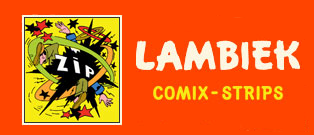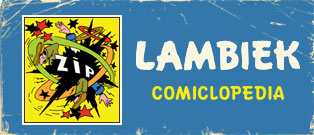Comics History
Early Dutch Comics
The history of comics in the Netherlands can be traced back to early hand-drawn documents which used sequential art to depict events or tell a story. Although some forms of Dutch comics have been popular for a long time, it is difficult to say exactly when comics began in the Netherlands.
Manuscripts dating back to the Middle Ages often used sequential pictures accompanied by text, or sometimes even used text-balloons for captions as in the detail above, from an unpublished letter written by the count of Meurs, graciously provided to us by the library of Zutphen.
Another striking example of an early forerunner of modern comics is the so-called centsprent or mannekesprent. These printed sheets were made public since the 1500s, and often depicted the lives of holy-men.

Other subjects were the fables of Aesop, and later the irreverent stories of 'Jan de Wasscher' ('Sissy John'), about a man who is bullied by his wife, appeared as a centsprent.


This period was also marked by the emergence of many humorous and satirical magazines. One of the most important was Het Humoristisch Album, started in 1856. Many illustrators, such as Jan Linse (1843-1906) and J. Holswilder (1850-1890) contributed to this magazine. In 1866, it published a Dutch version of the famous story of 'Monsieur Cryptogame', originally by Rudolf Töpffer (without crediting him). In translation, this was 'Meneer Spillebeen' or 'Meneer Prikkebeen'.
Jan Linse was the most notable contributor to Het Humoristisch Album, and is often considered the first Dutch comic artist. He drew several funny sequences, often with text underneath the picture.
Two gentlemen discuss the quality of different brands of genever liquor. Artwork by Jan Linse
In the beginning of the twentieth century much political attention went to the Boer War in South Africa. Since many Dutch farmers had settled there, Dutch artists felt involved, and commented on the situation in drawn parodies, such as the example below by Chris Kras (pseudonym of Jan Feith). Another artist who used the Boer War as a theme for an album was Korporaal Achilles. Both works breathe a distinct anti-British atmosphere.

A very important artist of this period was Daniël Hoeksema. He especially gained fame for his illustrations with 'De Neef van Prikkebeen' ('Prikkebeen's Cousin'), which was modelled after Töpffer's 'Monsieur Cryptogame'. He also drew many children's stories and did illustrations for advertisements.







